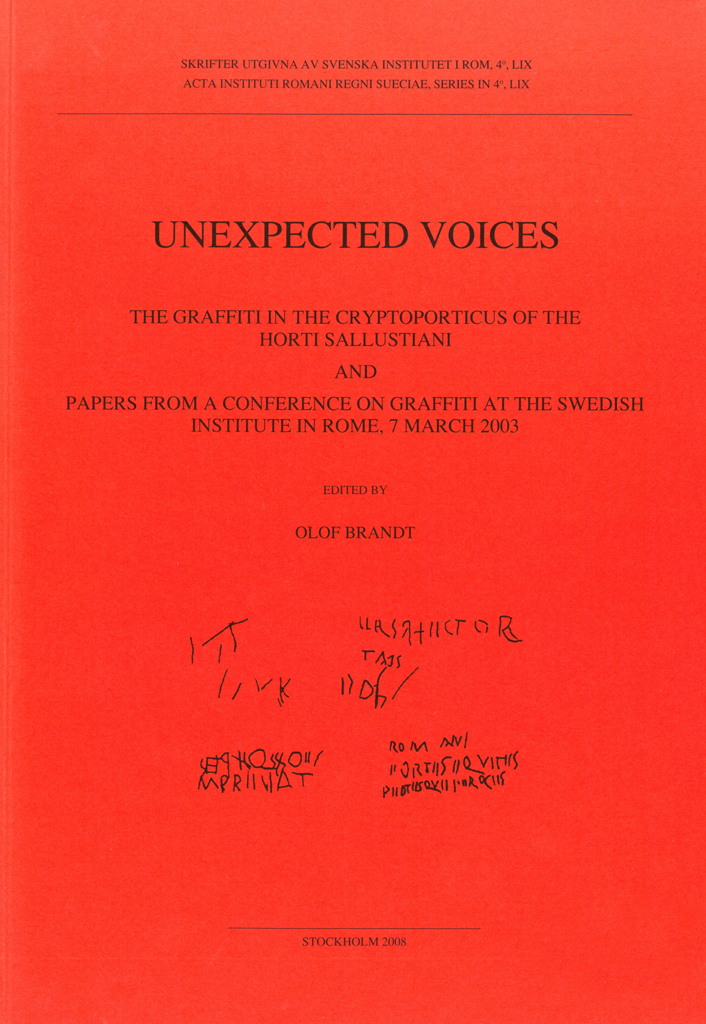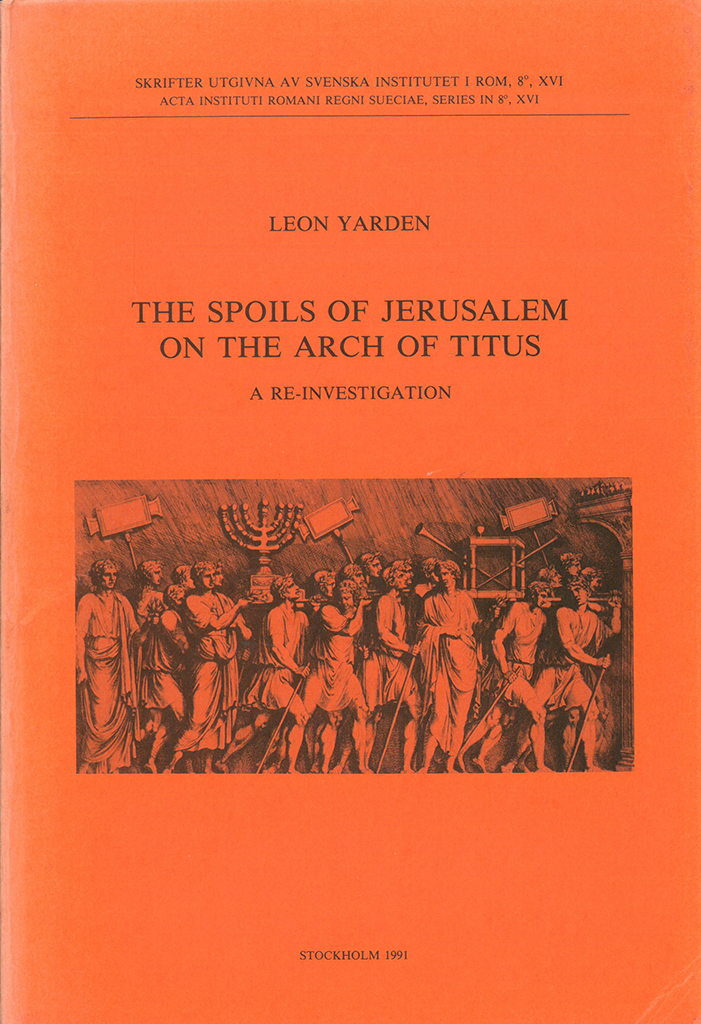Published by the Swedish Institute of Classical Studies in Rome. Available for purchase at Amazon.com, Amazon.de, Bokus.com, Adlibris.com. Distributed by Eddy.se AB. Unexpected voices. The graffiti in the cryptoporticus of the Horti Sallustiani and papers from a conference on graffiti at the Swedish Institute in Rome, 7 march 2003 By Olof Brandt (ed.) This volume presents the results of a collaboration between the Swedish Institute in Rome and the Embassy of the United States of America in Rome. The object of the research was a cryptoporticus, part of the ancient Horti Sallustiani, in the area of the American Embassy, and especially the graffiti found on the walls of the cryptoporticus, which were also decorated with paintings. The cryptoporticus, which is dated to the first century AD, was excavated in 1949–1950 and in the 1990s, but the graffiti have never been completely published. In this publication, all the graffiti are discussed and dated. Some belong to Late Antiquity, others were made in the 16th and 17th centuries. The study of these graffiti gives important information about the later fate of the first-century cryptoporticus. Several unpublished fragments of wall-paintings are also presented, and more general historic and archaeological aspects of the cryptoporticus…
Published by the Swedish Institute of Classical Studies in Rome. Distributed by Astrom Editions. The spoils of Jerusalem on the Arch of Titus. A re-investigation By Leon Yarden Abstract Leon Yarden published his doctoral thesis in a revised form under the title The tree of life (London 1971). Its subject was the menorah (seven-branched lampstand) depicted on the Arch of Titus in Rome as a part of the spoils from the destruction of the Temple in Jerusalem by the Romans in A.D. 70. The present book forms the continuation and completion of this work on the relief and covers not only the menorah but also the other ritual objects depicted with it – the ceremonial table, the two receptacles on the table and the two trumpets attached to the table. Dr. Yarden made a comprehensive study of the relief in situ in the summer of 1975, and this was supported by a photogrammetric survey made by Mr. C.-O. Jonason, of the Department of Photogrammetry at the Royal Institute of Technology in Stockholm. The purpose of this study was (1) to establish the precise appearance of the ritual objects today, (2) to gain as closely as possible a notion of their…


